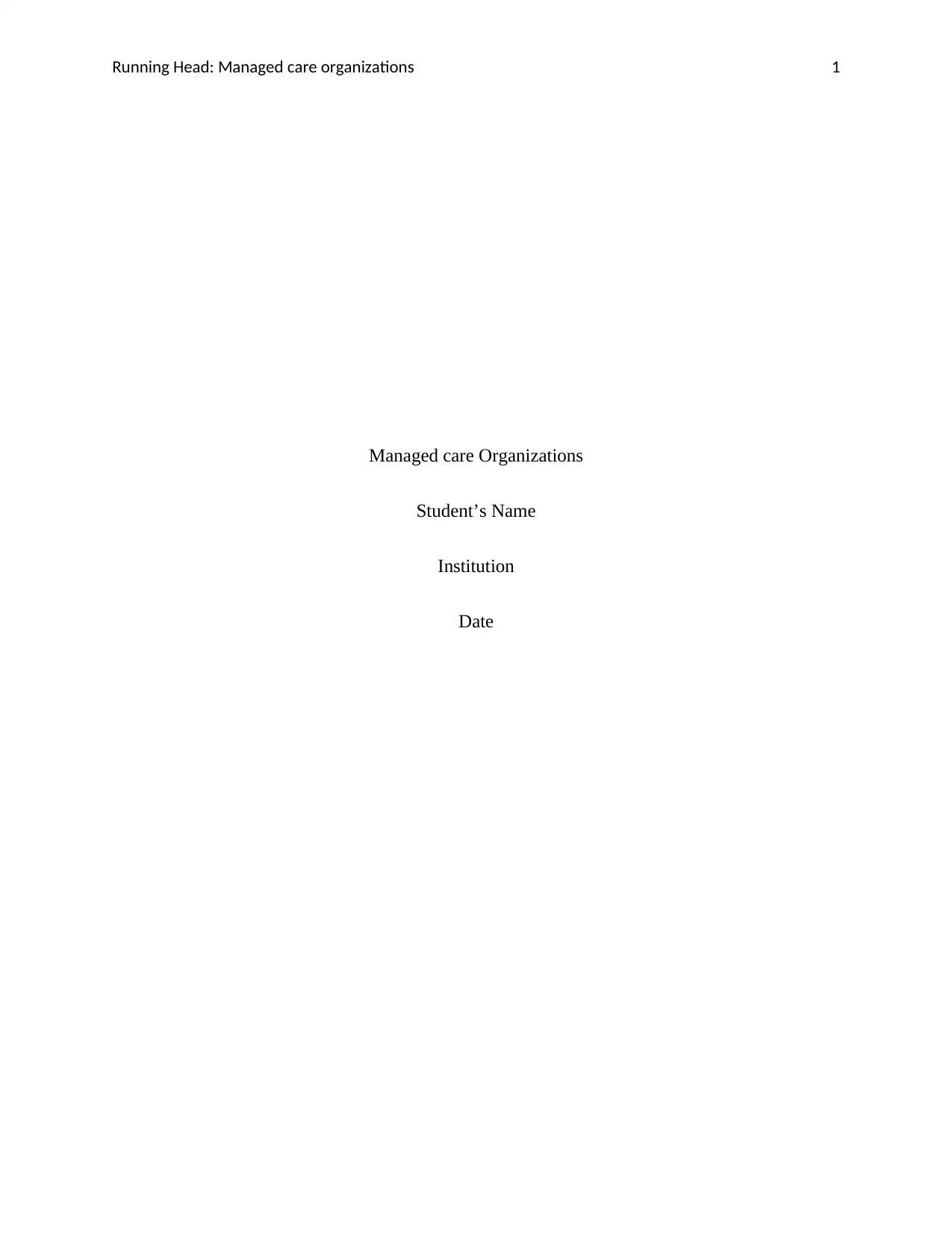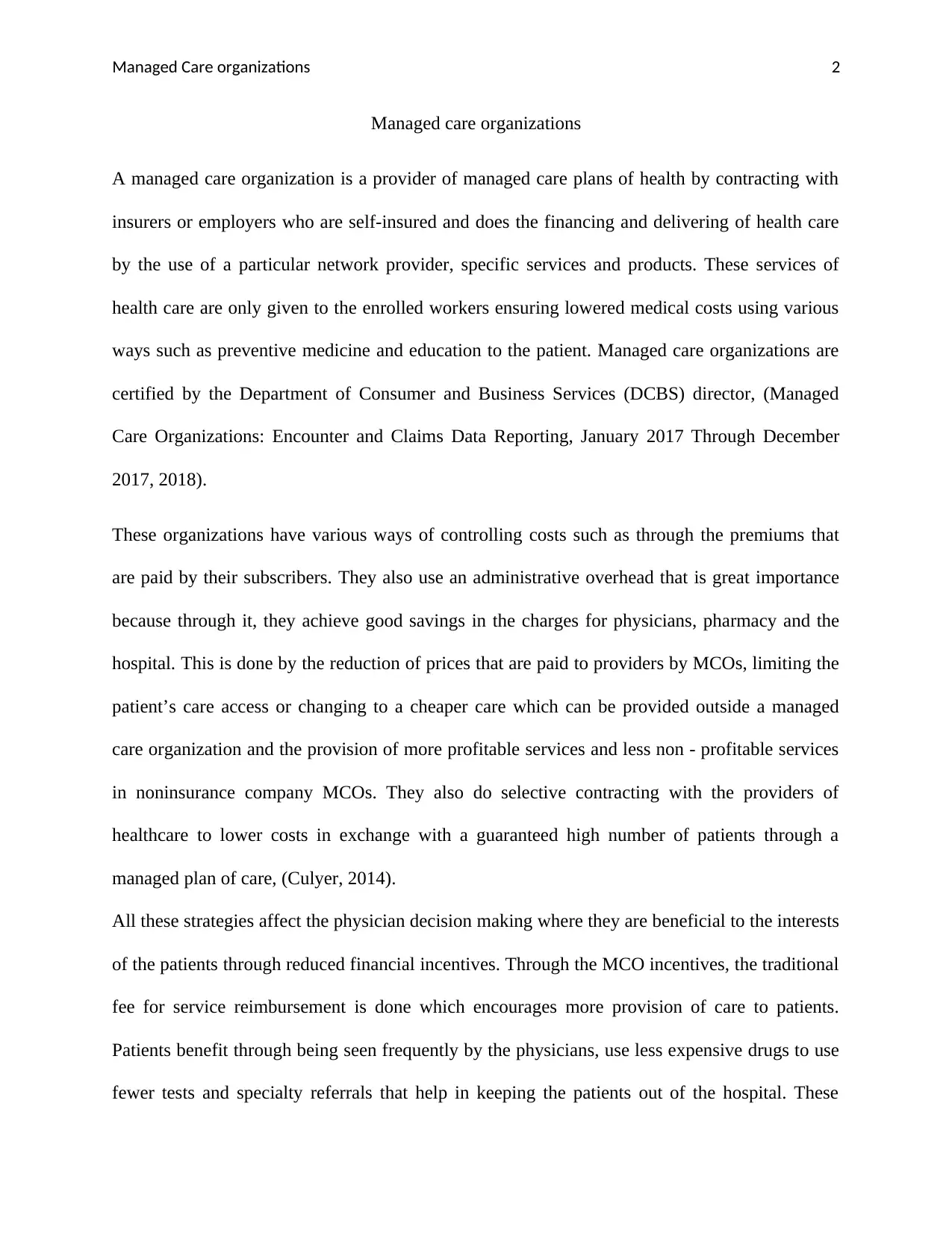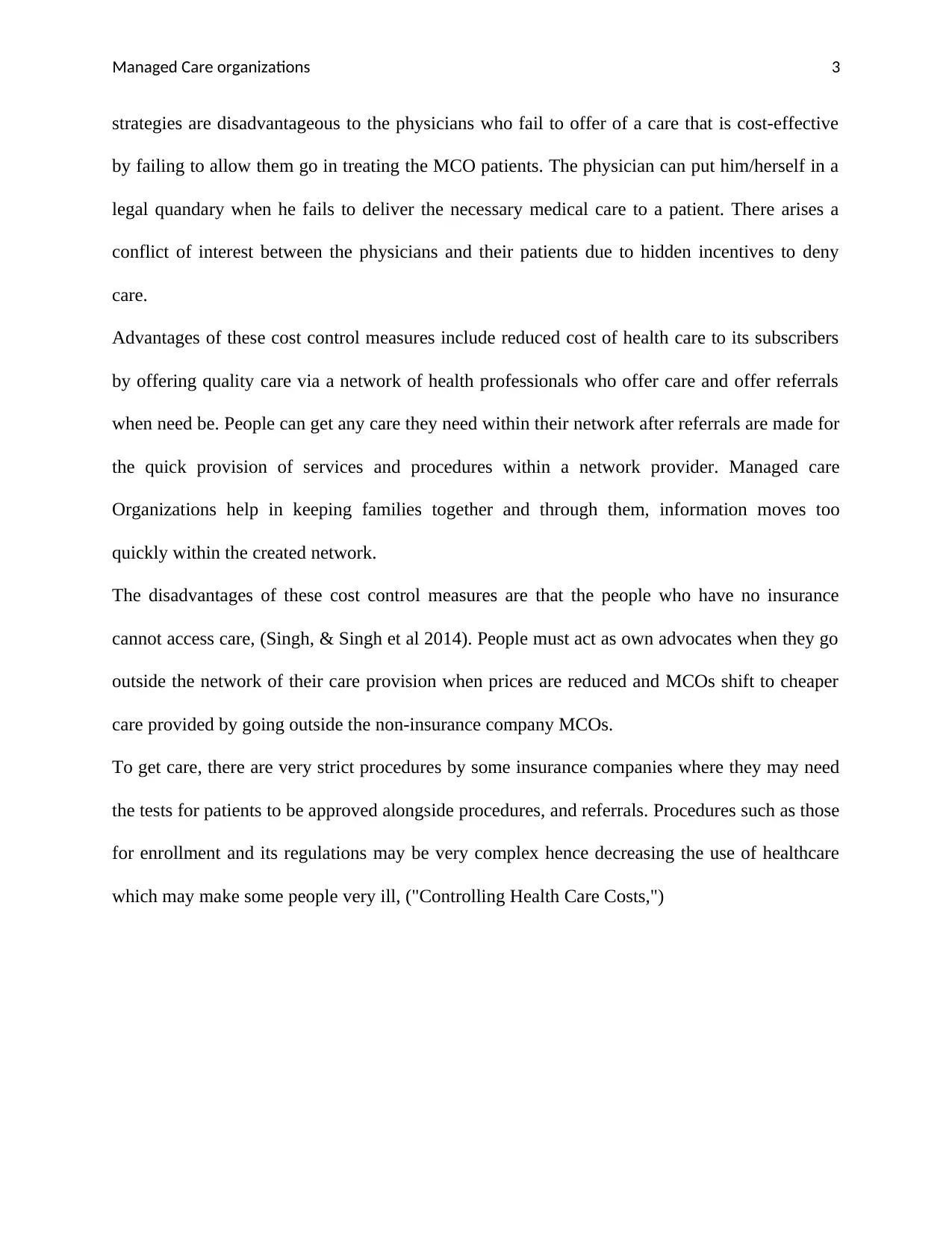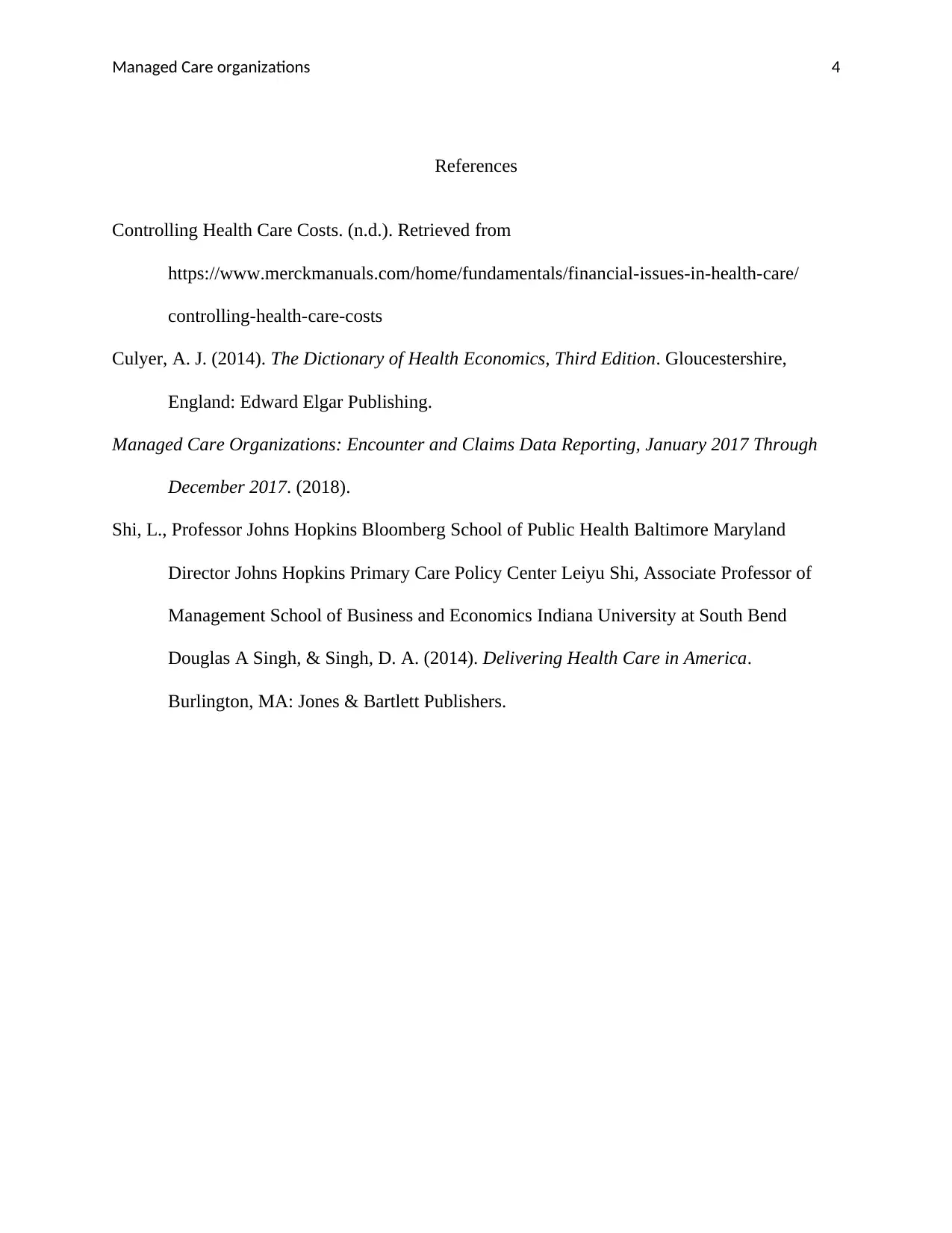Report on Managed Care Organizations: Strategies and Impacts
VerifiedAdded on 2022/09/06
|4
|765
|11
Report
AI Summary
This report provides an overview of Managed Care Organizations (MCOs), detailing their role in healthcare financing and delivery. It explains how MCOs contract with insurers and self-insured employers to manage healthcare costs through strategies like preventive medicine and provider networks. The report outlines various cost control measures employed by MCOs, such as premium structures, administrative overhead management, selective contracting, and the influence of these strategies on physician decision-making. It discusses the advantages of MCOs, including reduced healthcare costs and access to care within a network, while also highlighting disadvantages like limited access for the uninsured and strict procedures for care. The report references several sources to support its analysis of MCOs, their strategies, and their effects on the healthcare landscape.
1 out of 4











![[object Object]](/_next/static/media/star-bottom.7253800d.svg)